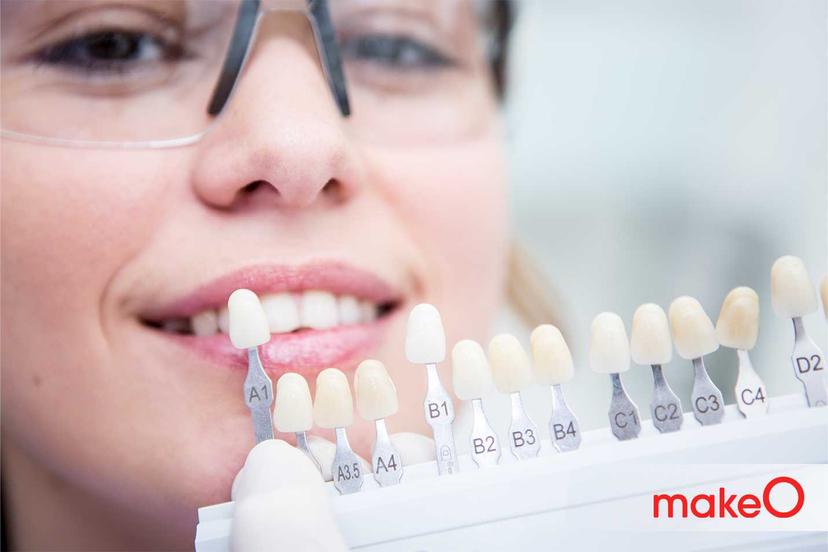MakeO blog
Having clear speech is an important part of being a confident speaker. Speech problems like lisp can significantly impact an individual's confidence and social interactions. Lisp speech can stem from various factors, including physical anomalies, neurological disorders and psychological factors. Understanding these problems is the first step towards effective solutions.
In this article, we shall talk about one of the most common speech problems- Lisp, its causes, types and treatment options. Stay tuned to the end of the blog to find out a way to permanently get rid of lisp in a non-invasive and convenient manner.
What is a Lisp?
A lisp is a speech abnormality where the individual finds it difficult to pronounce 's' and 'z' sounds, leading to unclear or distorted speech. This common speech issue can happen to anyone and can influence personal and professional interactions. Let us dive deeper into the subject and understand its causes, types and possible treatment methods.
Causes of Lisp Speech
- Developmental Issues
As children develop speech skills, they may temporarily exhibit a lisp. This is a normal part of speech development. However, if the lisp speech continues to hamper one’s communication beyond the age where speech typically stabilises (usually around the age of 4-5 years), it may reflect the need for professional help.
- Neurological Disorders
Various neurological conditions can impact the muscles and nerves involved in speech, leading to a lisp. Disorders such as cerebral palsy, traumatic brain injury or stroke can affect the control of the tongue and mouth.
- Hearing Impairments
A person who experiences hearing loss or impairments may be unable to hear certain sounds and hence find it difficult to pronounce them.
- Psychological Factors
In some cases, a lisp can be psychogenic, meaning it originates from psychological factors. Stress, anxiety or traumatic events can sometimes manifest in speech disorders like lisping, especially in adults.
Types of Lisps
- Interdental Lisp
This is one of the most common types of Lisp speech. In an interdental lisp, the tongue protrudes between the front teeth when attempting to produce the 's' and 'z' sounds, causing them to sound more like 'th'.
- Dentalised Lisp
When the tongue presses against the front teeth while pronouncing ‘s’ and ‘z’ sounds, it can be termed a dentalised lisp. This contact of teeth and tongue disturbs the airflow leading to a muffled or unclear pronunciation.
- Lateral Lisp
A lateral lisp is more complex and often considered one of the harder types to treat. In this case, the air flows over the sides of the tongue rather than directly through the middle of the mouth when making 's' and 'z' sounds. This creates a wet, slushy sound and can significantly affect speech clarity.
- Palatal Lisp
In a palatal lisp, the mid-section of the tongue comes in contact with the soft palate, or the roof of the mouth, far behind the teeth, while producing 's' and 'z' sounds. This unusual tongue placement alters the sound, often making it more muffled and less distinct.
Impact of Lisp on Communication
Having unclear speech can hinder clear communication. This can make the individual under confident in social, professional and even personal interactions. It can lead to self-consciousness, social anxiety, stage fright and impact one's overall quality of life.
Age Factor in Lisp Correction
While lisp speech can be corrected at any age, early intervention is key in correcting a lisp. While it is easier to treat in children due to their developing speech patterns, adults can also effectively address a lisp with proper therapy and dedication.
Orthodontic and Dental Solutions For Lisp
Orthodontic treatments like braces or aligners can rectify teeth alignment issues that contribute to a lisp. makeO toothsi offers clear aligners that can not only help correct lisps-associated issues but also provide you with perfectly straight and aligned teeth. You can find permanent solutions to issues like crossbite, overbite, misaligned teeth, crowded teeth or teeth crowding from the comfort of your home. The best part? These aligners are virtually invisible and impose no dietary restrictions. Head to makeO toothsi’s website to know all about how clear aligners work.
Conclusion
Understanding and addressing a lisp can be life-changing for effective communication and self-confidence. You can connect with makeO toothsi professionals and determine whether aligners are right for you or not. By addressing this speech impediment under expert supervision, individuals can significantly improve their communication skills and overall quality of life.
FAQs
What is lisp speech?
A lisp is a speech disorder where 's' and 'z' sounds are misarticulated, affecting the clarity of speech.
What are the common causes of a lisp?
Lisp speech can be commonly caused by developmental issues, neurological disorders, physical anomalies in the mouth, hearing impairments or psychological factors.
How many types of lisps are there?
There are four main types: interdental, decentralised, lateral and palatal lisps.
Can lisps be treated in adults?
Yes, with proper speech therapy and, if needed, dental or orthodontic interventions, lisps can be effectively treated in adults.
How do dental solutions help in correcting a lisp?
Dental solutions like makeO toothsi clear aligners can rectify structural issues in the mouth that contribute to a lisp, improving speech clarity.
related categories
Related articles

Types of Braces: Removable vs Fixed Braces, Which is Right For You?

This Diwali, Smile Bright With makeO Teeth Whitening Kit

Dr. Pravin Shetty: Pioneer in Lingual Orthodontics & Innovative Smile Solutions
How do I Know I’m the Right Candidate for makeO toothsi Teeth Aligners?

